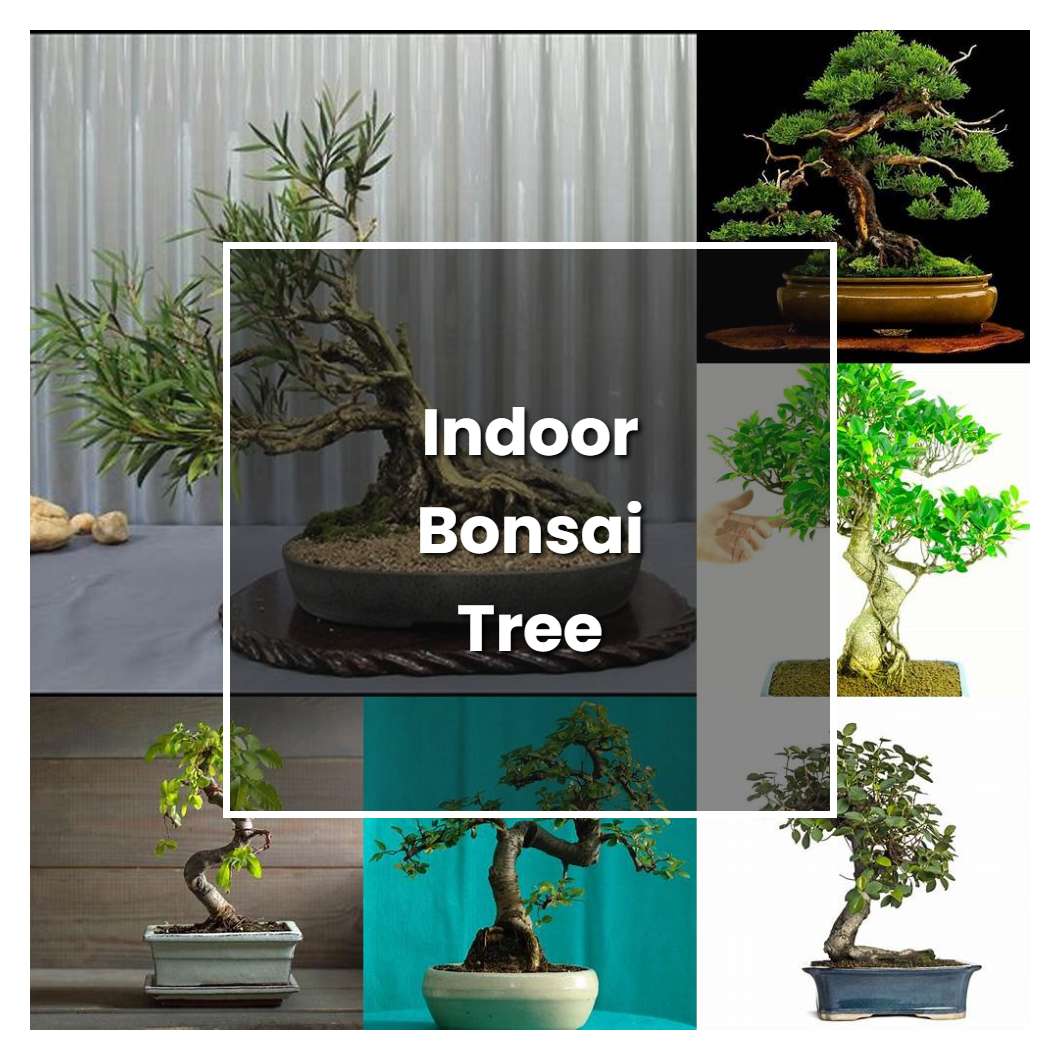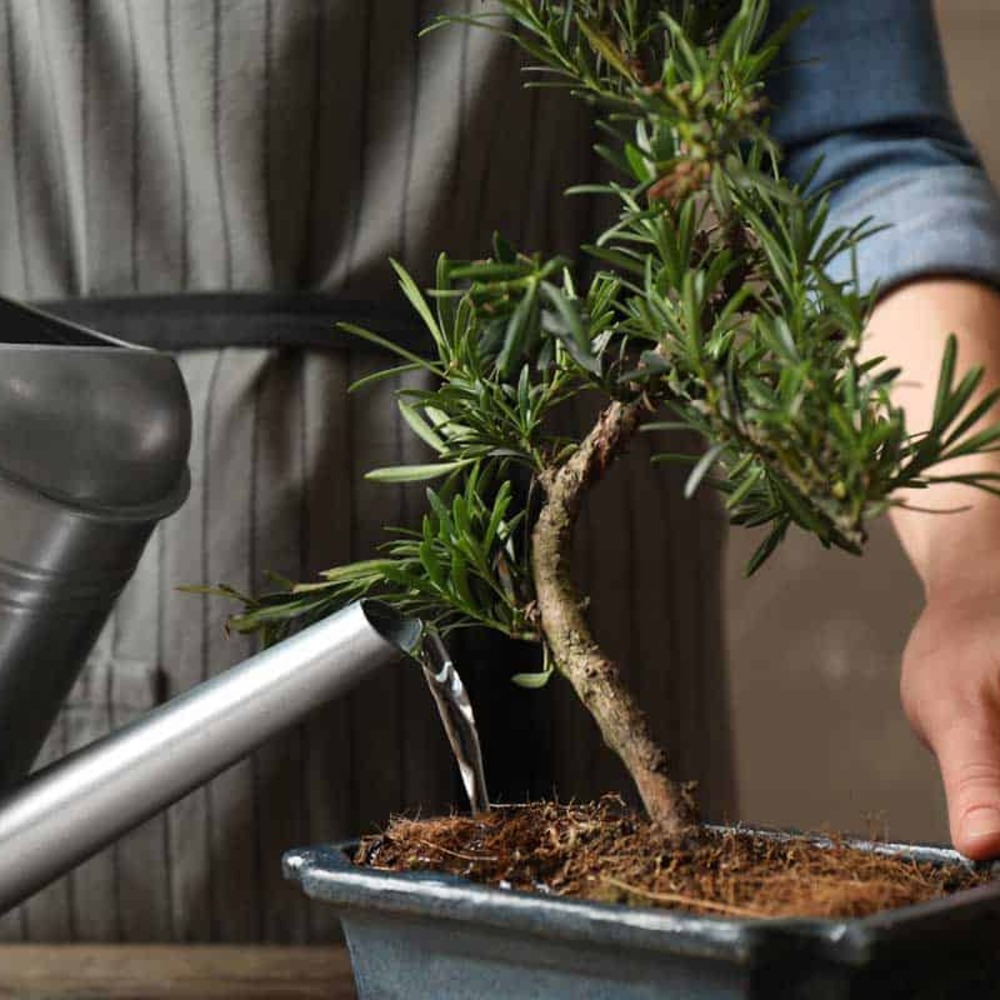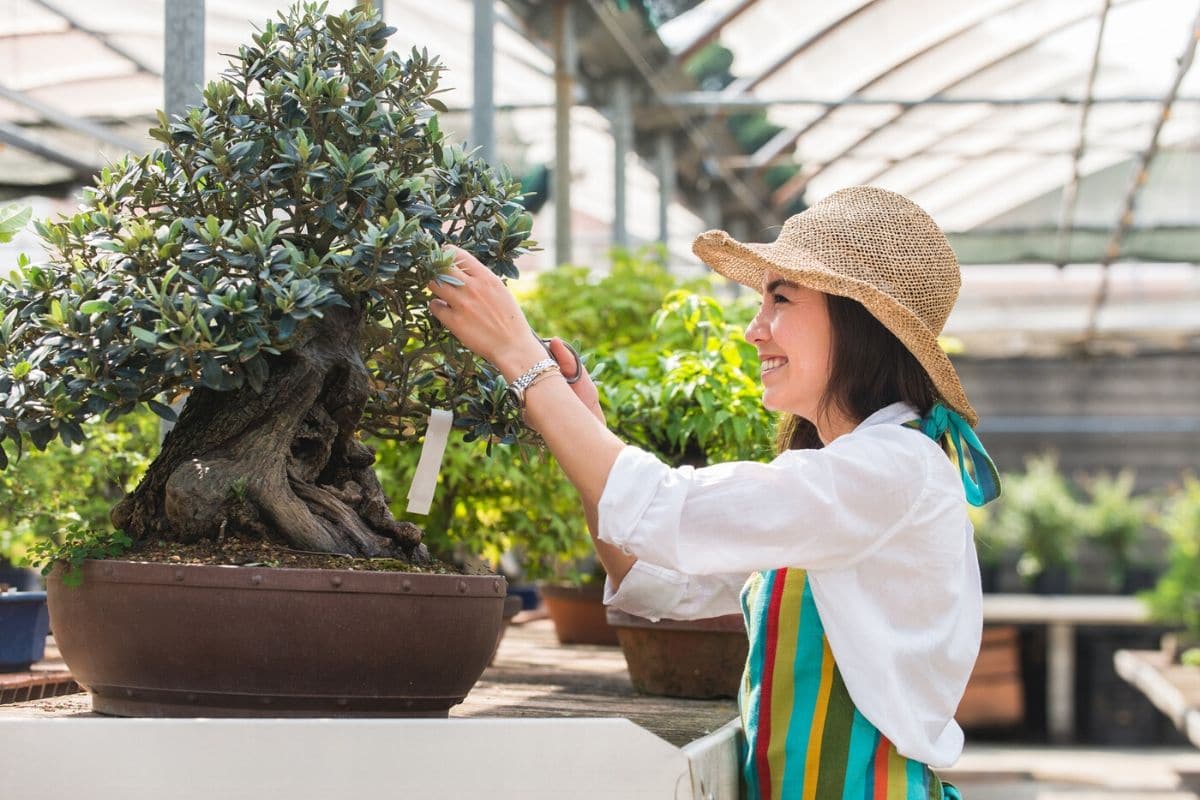Unlocking the Secrets of Indoor Bonsai Tree Care
Indoor bonsai trees have become increasingly popular for their ability to purify the air, reduce stress, and create a sense of serenity in the home. However, caring for a bonsai tree indoors requires attention to detail and a commitment to providing the right environment. To thrive, indoor bonsai trees need proper care and attention, including adequate lighting, watering, fertilization, pruning, and pest control.
When it comes to caring for a bonsai tree inside, it’s essential to understand the unique challenges and opportunities that come with growing a tree in a controlled environment. Indoor bonsai trees are more susceptible to pests, diseases, and nutrient deficiencies due to the lack of natural light and air circulation. However, with the right techniques and strategies, indoor bonsai trees can flourish and provide years of enjoyment.
To get started, it’s crucial to choose the right bonsai tree species for indoor care. Some popular species, such as Ficus, Juniper, and Chinese Elm, are well-suited for indoor environments due to their adaptability and hardiness. When selecting a bonsai tree, look for healthy trees with vibrant foliage, sturdy trunks, and well-developed root systems.
Once you’ve selected the perfect tree, it’s time to focus on creating a harmonious environment that promotes healthy growth and development. This includes providing adequate lighting, watering, and fertilization, as well as pruning and training the tree to maintain its shape and size. By following these simple steps and tips, you can unlock the secrets of indoor bonsai tree care and enjoy the many benefits that come with growing a thriving bonsai tree inside.
As you embark on your indoor bonsai tree care journey, remember that patience, persistence, and attention to detail are key. With time and practice, you’ll develop the skills and knowledge needed to create a stunning and thriving bonsai tree that brings joy and serenity to your home. Whether you’re a seasoned bonsai enthusiast or just starting out, the art of indoor bonsai tree care offers a unique and rewarding experience that’s sure to captivate and inspire.
Choosing the Right Bonsai Tree Species for Indoor Care
When it comes to selecting a bonsai tree for indoor care, it’s essential to choose a species that is well-suited for the indoor environment. Some popular species, such as Ficus, Juniper, and Chinese Elm, are ideal for indoor care due to their adaptability and hardiness. These species are more tolerant of low light conditions, temperature fluctuations, and humidity changes, making them perfect for indoor spaces.
When selecting a bonsai tree, look for healthy trees with vibrant foliage, sturdy trunks, and well-developed root systems. Avoid trees with signs of pests, diseases, or nutrient deficiencies. It’s also crucial to consider the mature size of the tree and its growth habits to ensure it will thrive in the indoor space.
For example, Ficus species are popular for indoor care due to their small leaves and ability to tolerate low light conditions. Juniper species, on the other hand, prefer brighter light and are ideal for south-facing windows. Chinese Elm species are known for their hardiness and can thrive in a variety of lighting conditions.
In addition to choosing the right species, it’s also essential to consider the tree’s age, size, and shape. Younger trees are often more adaptable to indoor conditions and can be trained to maintain a desired shape. Larger trees, on the other hand, may require more space and maintenance.
When caring for a bonsai tree inside, it’s also important to consider the tree’s specific needs, such as lighting, temperature, and humidity. By understanding the unique requirements of your bonsai tree species, you can provide the best possible care and create a thriving indoor environment.
By choosing the right bonsai tree species and providing proper care, you can enjoy the many benefits of indoor bonsai tree care, including air purification, stress reduction, and a sense of serenity. With the right techniques and strategies, you can create a stunning and thriving bonsai tree that brings joy and beauty to your indoor space.
Mastering the Art of Lighting for Your Indoor Bonsai Tree
Lighting is one of the most critical factors in caring for a bonsai tree indoors. Proper lighting can make all the difference in the health and well-being of your tree, while inadequate lighting can lead to weak and spindly growth. When it comes to lighting for indoor bonsai trees, there are three main types to consider: natural, artificial, and supplemental.
Natural light is always the best option for indoor bonsai trees, but it can be challenging to provide sufficient natural light, especially during the winter months. If possible, place your bonsai tree near a south-facing window or use a skylight to provide direct sunlight. However, be cautious not to expose your tree to direct sunlight for extended periods, as this can cause scorching and damage to the leaves.
Artificial lighting is a popular alternative to natural light, and there are many options available, including LED grow lights, fluorescent lights, and incandescent lights. When choosing artificial lighting, consider the color temperature and intensity of the light. Cool white light (around 5000-6500K) is ideal for promoting healthy growth and development, while warm white light (around 2700-3000K) is better suited for flowering and fruiting.
Supplemental lighting is also essential for indoor bonsai trees, especially during the winter months when natural light is scarce. Supplemental lighting can be used to provide additional light to areas of the tree that are not receiving sufficient natural light. This can be achieved using LED grow lights or other types of supplemental lighting.
When positioning your bonsai tree for optimal light exposure, consider the direction and intensity of the light. Place your tree in a location where it will receive bright, indirect light, and avoid placing it in areas with low light or direct sunlight. By providing the right amount and type of light, you can promote healthy growth and development in your indoor bonsai tree.
In addition to providing the right type and amount of light, it’s also essential to consider the duration of light exposure. Most indoor bonsai trees require 12-14 hours of light per day, but this can vary depending on the species and time of year. By providing the right amount and duration of light, you can create a harmonious environment for your indoor bonsai tree to thrive.
Watering Your Indoor Bonsai Tree: A Delicate Balance
Watering is one of the most critical aspects of caring for a bonsai tree indoors. Over-watering and under-watering can both be detrimental to the health of your tree, so it’s essential to find the right balance. When it comes to watering your indoor bonsai tree, there are several factors to consider, including soil moisture, water quality, and frequency.
Checking soil moisture is the first step in determining when to water your bonsai tree. Stick your finger into the soil up to the first knuckle, and if the soil feels dry, it’s time to water. If the soil feels damp or wet, wait another day or two before checking again. It’s also essential to consider the type of soil your tree is planted in, as some soils retain more moisture than others.
Water quality is also crucial when it comes to watering your bonsai tree. Use filtered or distilled water to avoid any chemicals or minerals that can harm your tree. Avoid using tap water, as it can contain high levels of chlorine and fluoride that can damage your tree’s roots.
The frequency of watering will depend on the species of your bonsai tree, as well as the temperature and humidity of your indoor environment. As a general rule, most indoor bonsai trees require watering once a week during the spring and summer months, and once every 10-14 days during the fall and winter months.
When watering your bonsai tree, make sure to water thoroughly, but avoid getting water on the trunk or leaves. Watering at the base of the tree will help prevent over-watering and ensure that the roots receive the right amount of moisture.
Avoiding over-watering is essential, as it can lead to root rot and other problems. If you notice that your tree is dropping leaves or showing signs of stress, it may be a sign that you’re over-watering. On the other hand, under-watering can cause your tree to become stressed and weak, so it’s essential to find the right balance.
By following these tips and guidelines, you can ensure that your indoor bonsai tree receives the right amount of water to thrive. Remember to monitor your tree’s response to watering and adjust your schedule accordingly. With the right watering techniques, you can create a healthy and thriving indoor bonsai tree that brings joy and serenity to your home.
Fertilizing Your Indoor Bonsai Tree for Optimal Growth
Fertilizing is an essential part of caring for a bonsai tree indoors. It provides the necessary nutrients for healthy growth and development, and helps to maintain the tree’s overall health. When it comes to fertilizing your indoor bonsai tree, there are several factors to consider, including the type of fertilizer, timing, and frequency.
There are two main types of fertilizers for indoor bonsai trees: organic and inorganic. Organic fertilizers, such as fish emulsion and compost tea, are made from natural ingredients and are a popular choice for bonsai enthusiasts. Inorganic fertilizers, such as chemical-based fertilizers, are also effective but can be more harsh on the tree.
When choosing a fertilizer, consider the specific needs of your bonsai tree. If your tree is in a period of active growth, a balanced fertilizer with equal amounts of nitrogen, phosphorus, and potassium (NPK) is a good choice. If your tree is in a dormant period, a fertilizer with a higher phosphorus content can help promote root growth.
The timing of fertilization is also crucial. Most indoor bonsai trees require fertilization during the growing season, which typically occurs in the spring and summer months. During this time, fertilize your tree once a month with a balanced fertilizer. During the dormant season, fertilize your tree once every 2-3 months with a fertilizer that is high in phosphorus.
The frequency of fertilization will also depend on the age and size of your bonsai tree. Younger trees require more frequent fertilization, while older trees require less frequent fertilization. It’s also essential to avoid over-fertilizing, as this can cause damage to the tree’s roots and leaves.
When applying fertilizer, follow the instructions on the label carefully. Most fertilizers are applied by watering the tree with a solution of fertilizer and water. Make sure to water your tree thoroughly before applying fertilizer, and avoid getting fertilizer on the trunk or leaves.
By fertilizing your indoor bonsai tree regularly, you can promote healthy growth and development, and maintain the tree’s overall health. Remember to choose the right type of fertilizer, timing, and frequency for your tree’s specific needs, and avoid over-fertilizing to prevent damage.
Pruning and Training Your Indoor Bonsai Tree
Pruning and training are essential techniques for maintaining the shape and promoting healthy growth of your indoor bonsai tree. Pruning involves cutting or removing branches and leaves to control the tree’s size and shape, while training involves using wires and other techniques to shape the tree’s branches and trunk.
There are several reasons why pruning and training are important for indoor bonsai trees. Pruning helps to maintain the tree’s size and shape, promotes healthy growth, and encourages the development of new branches and leaves. Training helps to shape the tree’s branches and trunk, creating a balanced and harmonious shape that is aesthetically pleasing.
When pruning your indoor bonsai tree, it’s essential to use the right tools and techniques. Use sharp, clean pruning tools to avoid damaging the tree’s branches and leaves. Cut branches at a 45-degree angle, and remove any dead or damaged leaves or branches. Prune your tree regularly, ideally during the growing season, to maintain its shape and promote healthy growth.
Training your indoor bonsai tree involves using wires and other techniques to shape its branches and trunk. Use aluminum or copper wire to shape the tree’s branches, and remove the wire after 2-3 months to avoid damaging the tree. You can also use other techniques, such as pruning and pinching, to shape the tree’s branches and trunk.
Repotting is another important technique for maintaining the health and shape of your indoor bonsai tree. Repot your tree every 2-3 years, ideally during the spring or summer, to provide fresh soil and a larger pot if necessary. Use a well-draining potting mix and a pot that is slightly larger than the previous one to give the tree’s roots room to grow.
By pruning and training your indoor bonsai tree regularly, you can maintain its shape and promote healthy growth. Remember to use the right tools and techniques, and prune and train your tree regularly to achieve the desired shape and size.
Pruning and training are ongoing processes that require patience, skill, and attention to detail. With practice and experience, you can develop the skills and techniques necessary to create a beautiful and thriving indoor bonsai tree that brings joy and serenity to your home.
Pest Control and Common Problems in Indoor Bonsai Trees
Indoor bonsai trees are susceptible to various pests and problems that can affect their health and well-being. Some common pests that can infest indoor bonsai trees include spider mites, mealybugs, and scale. These pests can cause damage to the tree’s leaves, stems, and roots, and can also transmit diseases.
Spider mites are tiny, spider-like insects that feed on the sap of bonsai trees. They can cause yellowing or bronzing of the leaves, and can also spin webs on the tree’s branches. Mealybugs are small, white insects that feed on the sap of bonsai trees, causing stunted growth and yellowing of the leaves. Scale is a type of insect that feeds on the sap of bonsai trees, causing stunted growth and yellowing of the leaves.
Root rot is another common problem that can affect indoor bonsai trees. It is caused by over-watering, which can lead to the roots of the tree rotting. This can cause the tree to become unstable and can also lead to the death of the tree.
To prevent pest infestations and common problems, it is essential to maintain good hygiene and provide proper care for your indoor bonsai tree. This includes watering your tree properly, fertilizing it regularly, and pruning it regularly to maintain its shape and promote healthy growth.
Regularly inspect your tree for signs of pests or problems, and take action immediately if you notice any issues. Use insecticidal soap or neem oil to control pest infestations, and treat root rot by repotting the tree in fresh soil and reducing watering.
By being aware of the common pests and problems that can affect indoor bonsai trees, you can take steps to prevent them and ensure that your tree remains healthy and thriving. With proper care and attention, your indoor bonsai tree can bring joy and serenity to your home for years to come.
Prevention is key when it comes to pest control and common problems in indoor bonsai trees. By maintaining good hygiene, providing proper care, and regularly inspecting your tree, you can prevent many common problems and ensure that your tree remains healthy and thriving.
Creating a Harmonious Environment for Your Indoor Bonsai Tree
Creating a harmonious environment is crucial for the health and well-being of your indoor bonsai tree. This includes maintaining a stable temperature, humidity, and air circulation. By providing the right environment, you can promote healthy growth and prevent common problems.
Temperature is an essential factor to consider when creating a harmonious environment for your indoor bonsai tree. Most bonsai trees prefer daytime temperatures between 65-75°F (18-24°C) and nighttime temperatures around 55-65°F (13-18°C). Avoid placing your tree near heating or cooling vents, fireplaces, or drafty windows.
Humidity is another critical factor to consider. Indoor bonsai trees prefer a humid environment, typically between 40-60% relative humidity. You can increase the humidity around your tree by placing it on a tray filled with water and pebbles or using a humidifier.
Air circulation is also essential for healthy growth and preventing common problems. Make sure your tree has enough space around it for air to circulate freely. Avoid placing your tree in a corner or against a wall, as this can create a stagnant environment.
Lighting is also an important factor to consider when creating a harmonious environment for your indoor bonsai tree. Most bonsai trees prefer bright, indirect light, but some species can tolerate low light conditions. Make sure to research the specific lighting requirements for your tree species.
By creating a harmonious environment, you can promote healthy growth and prevent common problems. Remember to maintain a stable temperature, humidity, and air circulation, and provide the right lighting conditions for your tree species.
By following these tips and guidelines, you can create a harmonious environment that promotes healthy growth and well-being for your indoor bonsai tree. With proper care and attention, your tree can thrive and bring joy and serenity to your home.









